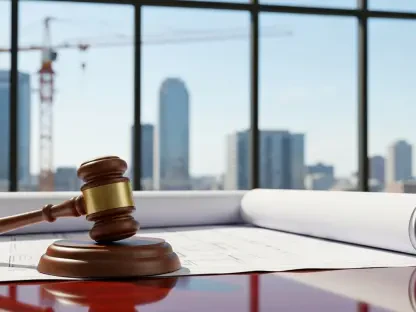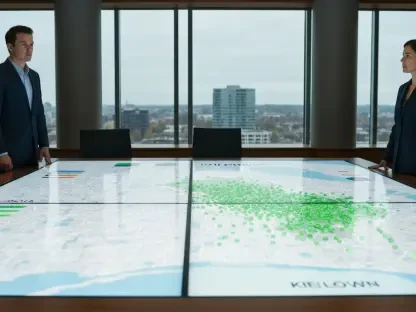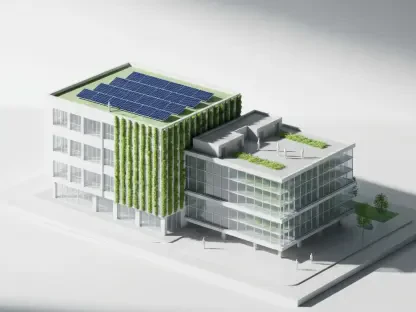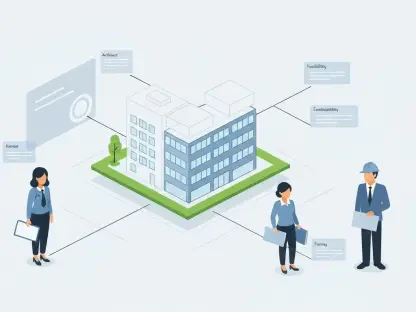As an expert in construction with a deep understanding of design, architecture, and the technological advances shaping the industry, Luca Calaraili is well-positioned to dissect the recent infrastructure priorities set forth by the Trump administration. In this discussion, Luca offers insights into the fundamental shifts proposed for America’s transportation landscape, emphasizing regulatory changes, project efficiencies, and the integration of private capital.
What are the main infrastructure priorities outlined by the Trump administration?
The administration has spotlighted a few critical areas, primarily focusing on overhauling the permitting process and accelerating construction timelines. This initiative aims to break down barriers caused by slow approvals and bureaucracy, thus allowing infrastructure projects to progress more swiftly and efficiently. It’s about cutting through the red tape that often stalls progress.
How does the administration plan to streamline rules and regulations to speed up construction?
A significant part of the plan involves reforming existing frameworks like the National Environmental Policy Act (NEPA), as well as enhancing initiatives such as One Federal Decision. The idea is to leverage technology to simplify processes and reduce the complexities involved in project approvals, making it faster and less burdensome for developers.
Can you elaborate on the agreement signed with Texas DOT and its significance?
This agreement is crucial as it allows the Texas Department of Transportation to take more responsibility for environmental permitting, streamlining the process locally and setting a potential model for other states. It represents a shift towards empowering states to expedite infrastructure projects while maintaining environmental considerations.
What are the key elements of Secretary Duffy’s “America is Building Again” agenda?
Duffy’s agenda embraces a multifaceted approach: improving transportation safety, accelerating project delivery through reforms, fostering economic growth with targeted investments, and strengthening collaborations among states and stakeholders. This holistic strategy aims to position America as a leader in efficient and sustainable infrastructure development.
How is the DOT planning to enhance transportation safety under this new agenda?
Innovation and technology play a significant role here—a focus on incorporating intelligent systems and more robust safety standards across all transportation modes. The agenda stresses not just constructing infrastructure but doing so with an eye toward minimizing risks and safeguarding public welfare.
What specific changes are being proposed to the National Environmental Policy Act (NEPA)?
The proposed changes aim to untangle some of NEPA’s more cumbersome aspects by delegating responsibilities to the states, allowing them to conduct their reviews and approvals. This shift could herald a more agile framework, bypassing prolonged federal processes while maintaining environmental integrity.
How will the recent $488 million BUILD program funding be allocated across the 30 infrastructure projects?
The funding is set to address a variety of projects, including bridge replacements and initiatives geared towards flood resiliency. These allocations reflect the administration’s commitment to enhancing infrastructure that supports both economic and community resilience in diverse geographic areas.
Why does Secretary Duffy encourage states to assume NEPA responsibilities?
By encouraging states to take charge, Duffy envisions reducing federal bottlenecks that can delay project starts and completions. States can adapt processes to local needs and conditions, ideally resulting in faster, more context-sensitive infrastructure development.
What arguments has Secretary Duffy made regarding the costs and timeline associated with NEPA?
Duffy has highlighted that NEPA reviews are often lengthy and costly, suggesting that streamlining these processes can cut down exorbitant expenses and delays that are currently inherent in federally managed environmental reviews.
Can you explain Secretary Duffy’s stance on categorical exclusion for routine rail maintenance under NEPA?
He advocates for a balanced approach where repeated and non-controversial rail maintenance could be streamlined under categorical exclusions. This would prevent such projects from getting bogged down in unnecessary procedural complications and expedite maintenance efforts.
What is the current status of the Surface Transportation Reauthorization, and what are its future prospects?
The reauthorization forms part of the broader Infrastructure Investments and Jobs Act, slated to expire in 2026. Moving forward, there’s a strong push for further innovation in transport infrastructure, targeting improved project delivery through streamlined grants and legislative support.
How does the DOT plan to consolidate grant programs for easier navigation?
Secretary Duffy’s approach involves centralizing these programs into a single platform or dashboard, allowing for clearer oversight and management. By simplifying the grant process, stakeholders can better track project status and funding progress, enhancing transparency and efficiency.
What role does Secretary Duffy see for private capital in infrastructure investment?
Duffy recognizes the potential of private capital to supplement federal funding. With attractive returns on infrastructure projects, he sees an opportunity for more American private investors to engage, reducing reliance on foreign capital and fostering domestic investment networks.
How is the recent reduction in force at the DOT likely to impact its operations and mission?
Despite reductions, Secretary Duffy insists on maintaining critical safety positions, attempting to do more with less. While this offers challenges, it also presents a chance for optimizing operations and ensuring that essential services continue without compromising quality.
What are the concerns around mass layoffs at the Federal Highway Administration?
There’s notable concern that reduced staffing could adversely affect the capacity to support state DOTs and deliver infrastructure projects. Such cuts might strain resources further, limiting the responsiveness and effectiveness of federal assistance.
How did Secretary Duffy respond to concerns about defunding Small Business Transportation Resource Centers?
Duffy’s stance is rooted in constitutional views on preferences. While acknowledging these concerns, he emphasizes scrutiny towards initiatives based on race and sex, suggesting a need for a more uniform approach in funding allocations without bias.
How does Secretary Duffy view current rules and permits affecting rail project costs?
Current permit processes often inflate costs, prompting Duffy to advocate for reforms that could ease restrictions and stimulate rail project development. His aim is to match international efficiency standards, reducing the excessive costs hampering domestic rail infrastructure growth.
What led to the decision to pull $4 billion in unspent grants for the California High-Speed Rail?
This decision stems from a broader reassessment of federal investments, where unspent funds are redirected to projects with clearer execution timelines and feasibility. The focus is on ensuring funds match viable, impactful initiatives.
How does Secretary Duffy propose handling states that don’t comply with ICE agents in terms of federal transportation dollars?
Duffy supports withholding federal funds from states that do not adhere to federal policies concerning law enforcement cooperation. This proposal aims to align state practices with national directives, using funding as an incentive for compliance.
What feedback is the DOT looking for in their Request for Information on Surface Transportation Priorities?
The DOT seeks broad input from stakeholders on pressing infrastructure needs. This feedback is crucial in shaping future proposals that focus on fundamental improvements to surface transportation across the country.
What is your forecast for the future advancements in the use of technology within construction and infrastructure?
I envision technology revolutionizing how projects are conceptualized and executed, with digital tools streamlining design and construction processes. Future advancements will likely lead to smarter cities with integrated infrastructure solutions that cater to evolving urban needs.









